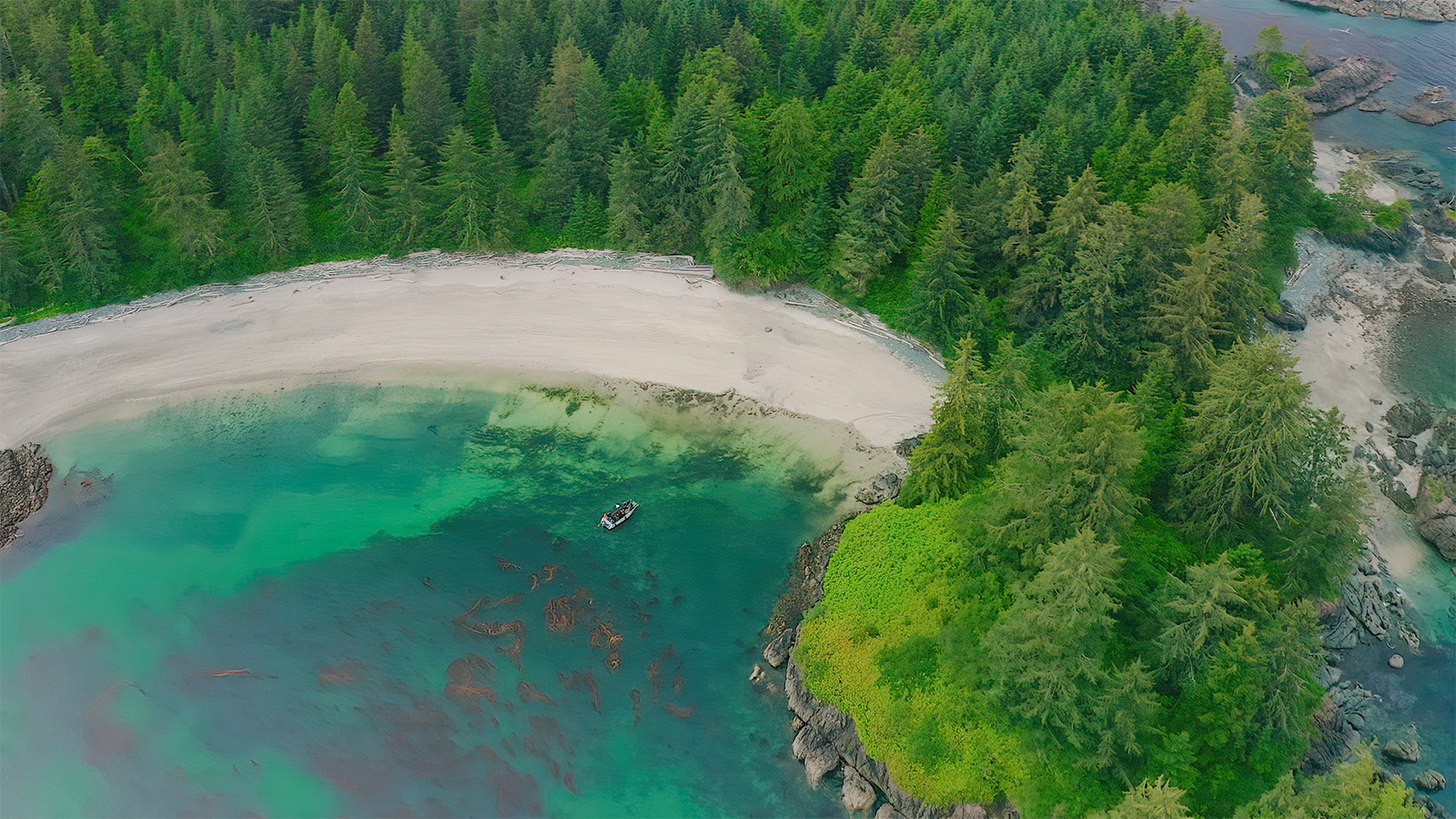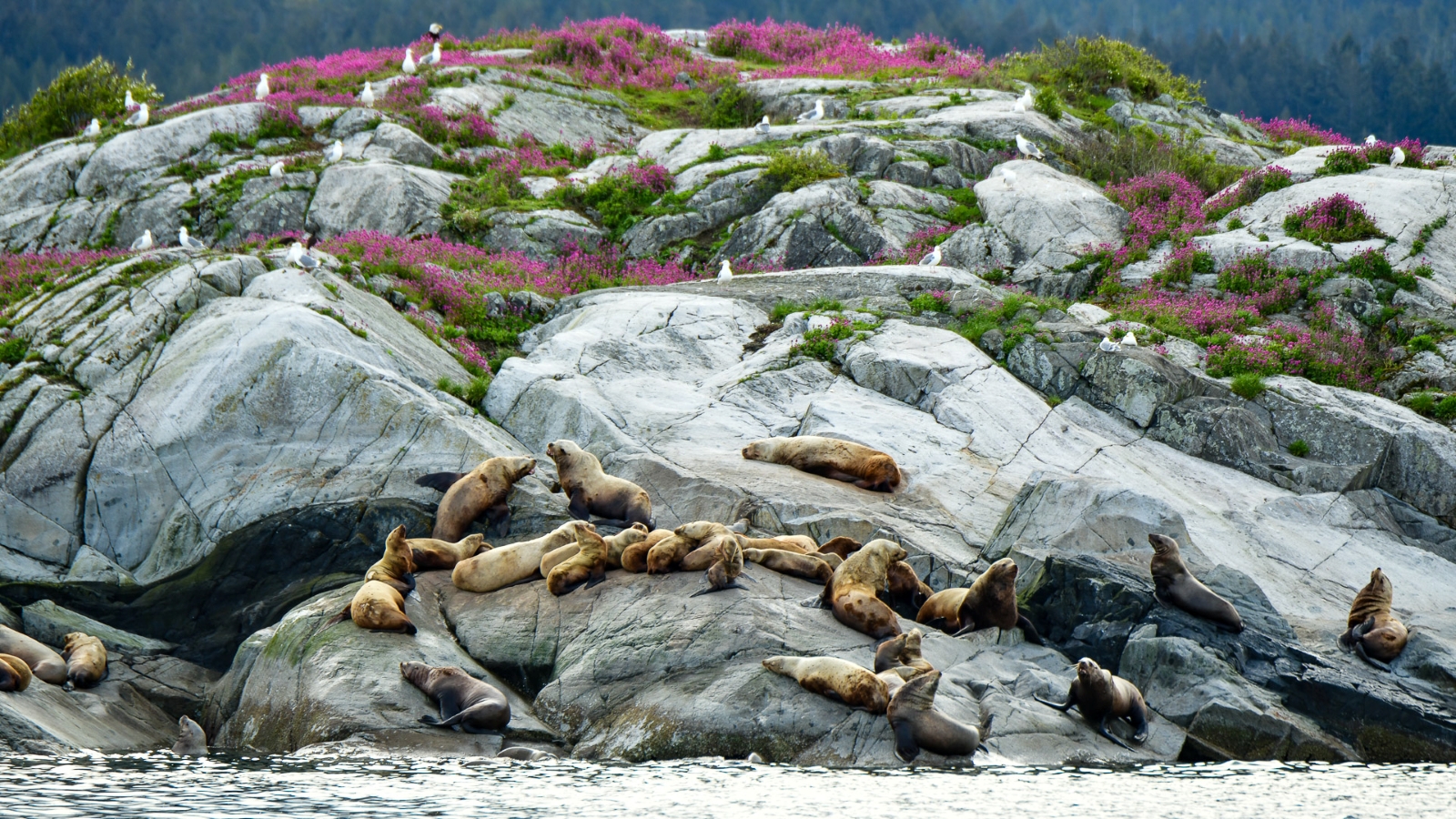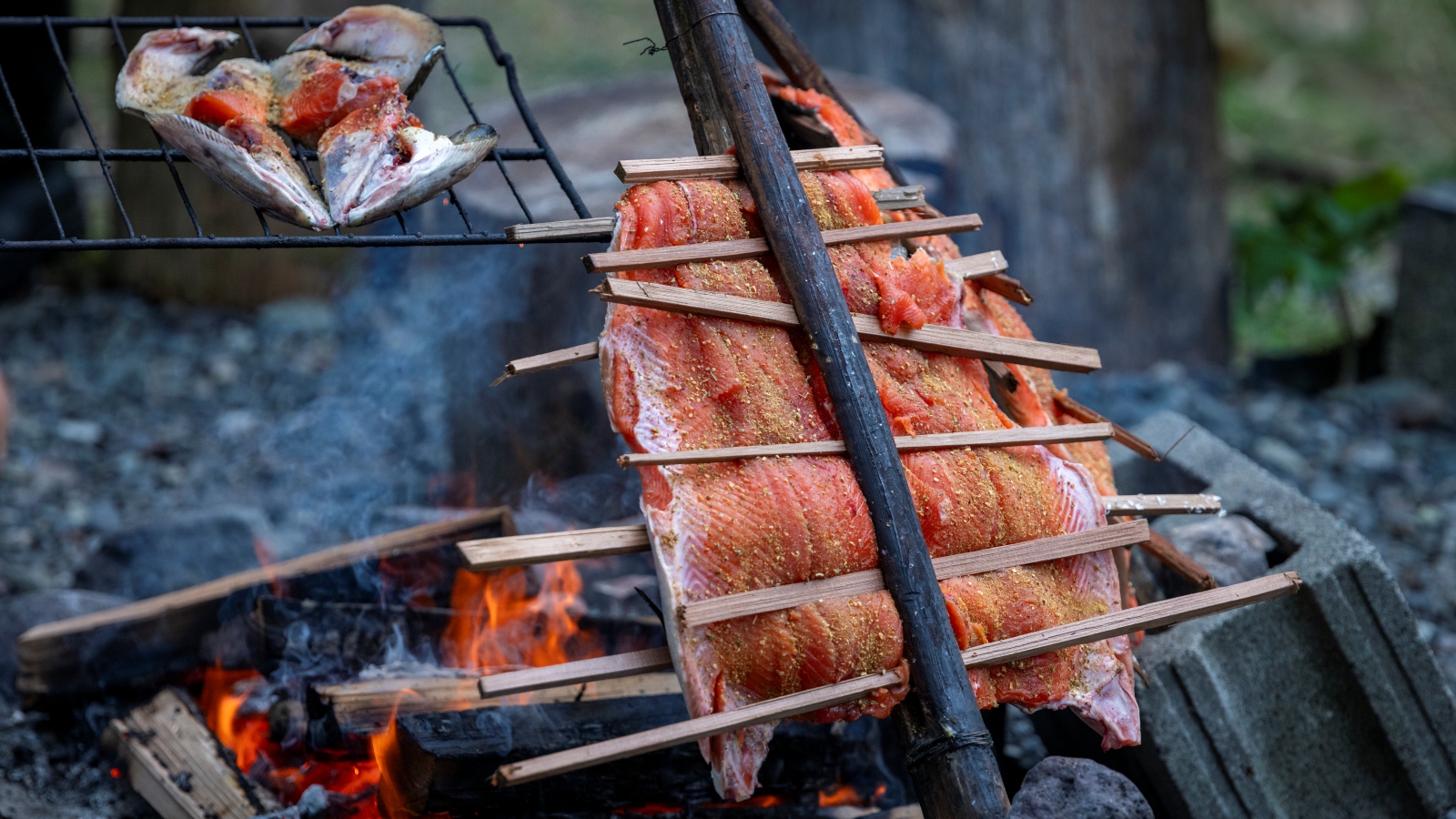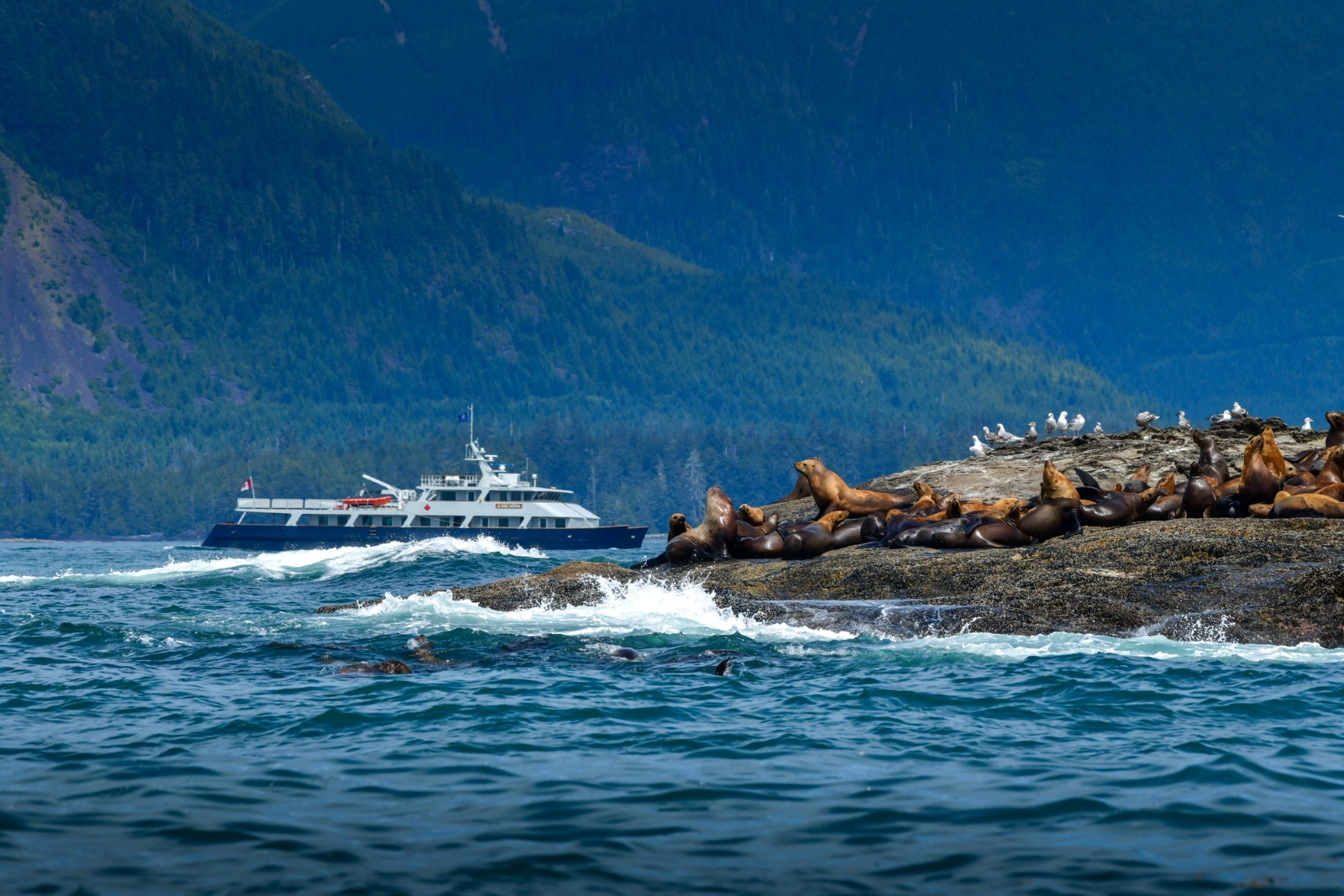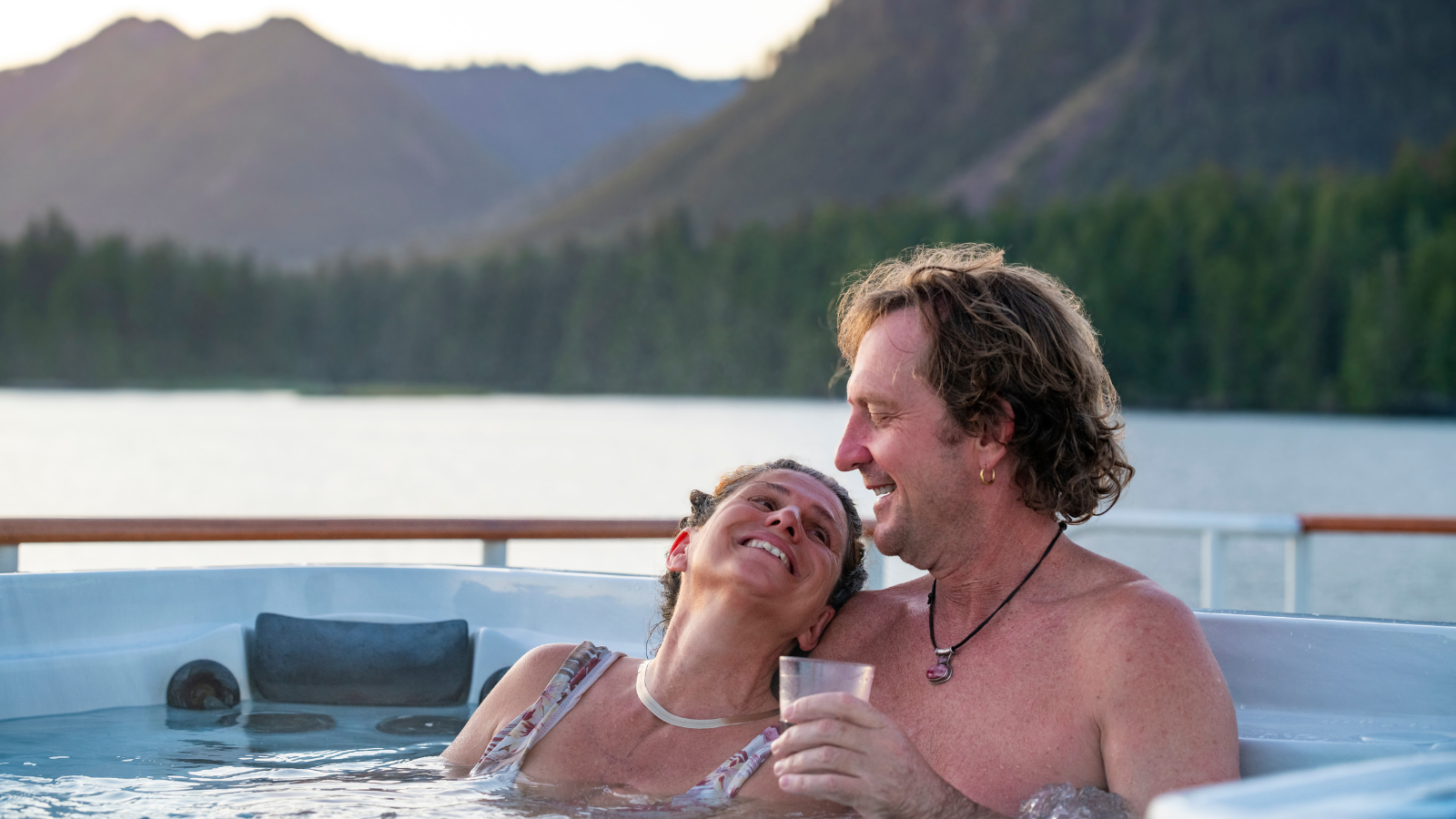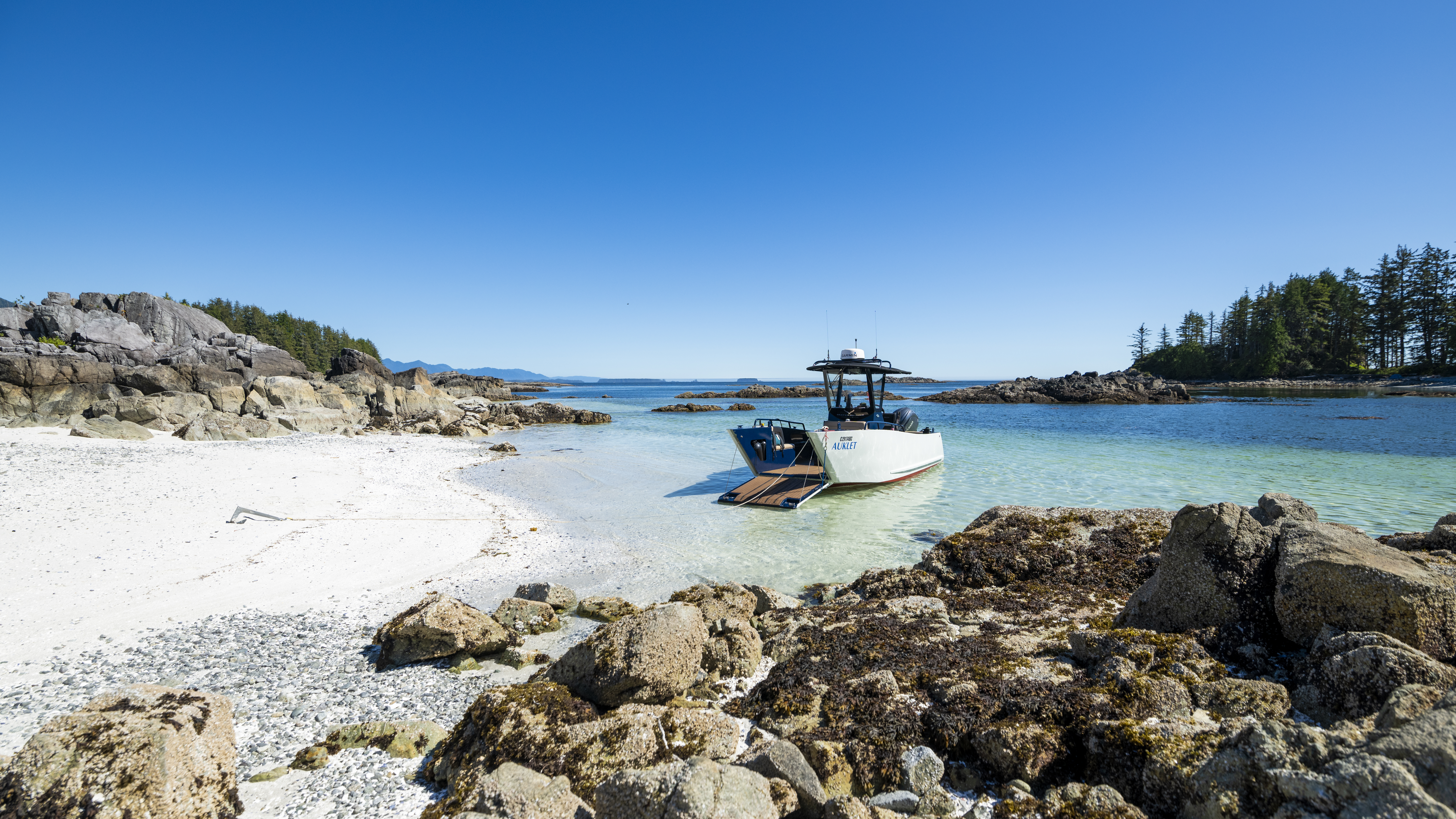A Local’s Guide to the Island’s Best Seasons
Vancouver Island is a year-round destination, but your experience here will vary dramatically depending on when you come. The wildlife changes. The weather shifts. Some parts of the coast become easier to reach, while others become richer in activity.
If you’re looking to plan a trip, here’s a breakdown of what to expect across spring, summer, and fall—times of year that bring the most to life, both on land and at sea.
Spring (March to June)
Quiet trails, fresh growth, and early wildlife activity
Spring is one of the most underrated times to visit Vancouver Island. The days start getting longer, and by April and May, the island is fully waking up—rivers run high with snowmelt, wildflowers are blooming, and the rainforest looks its greenest.
Photo: Phil Stone
Spring haul-out—Steller sea lions bask in the coastal sun along Vancouver Island’s Inside Passage. The mild coastal climate means spring arrives earlier than elsewhere in Canada.
It’s also the start of the wildlife season. Black bears begin to emerge from hibernation and forage along the coastline. Gray whales migrate along the west coast, and humpbacks start showing up again offshore. Birdlife is busy—everything from oystercatchers to eagles is active. If you’re hoping to explore without the summer crowds, this is the time.
Coastal trips in places like the Inside Passage or the Broughton Archipelago are particularly rewarding. Expect a bit of rain, especially earlier in the season, but also crisp air, quiet anchorages, and forests that feel alive.
-
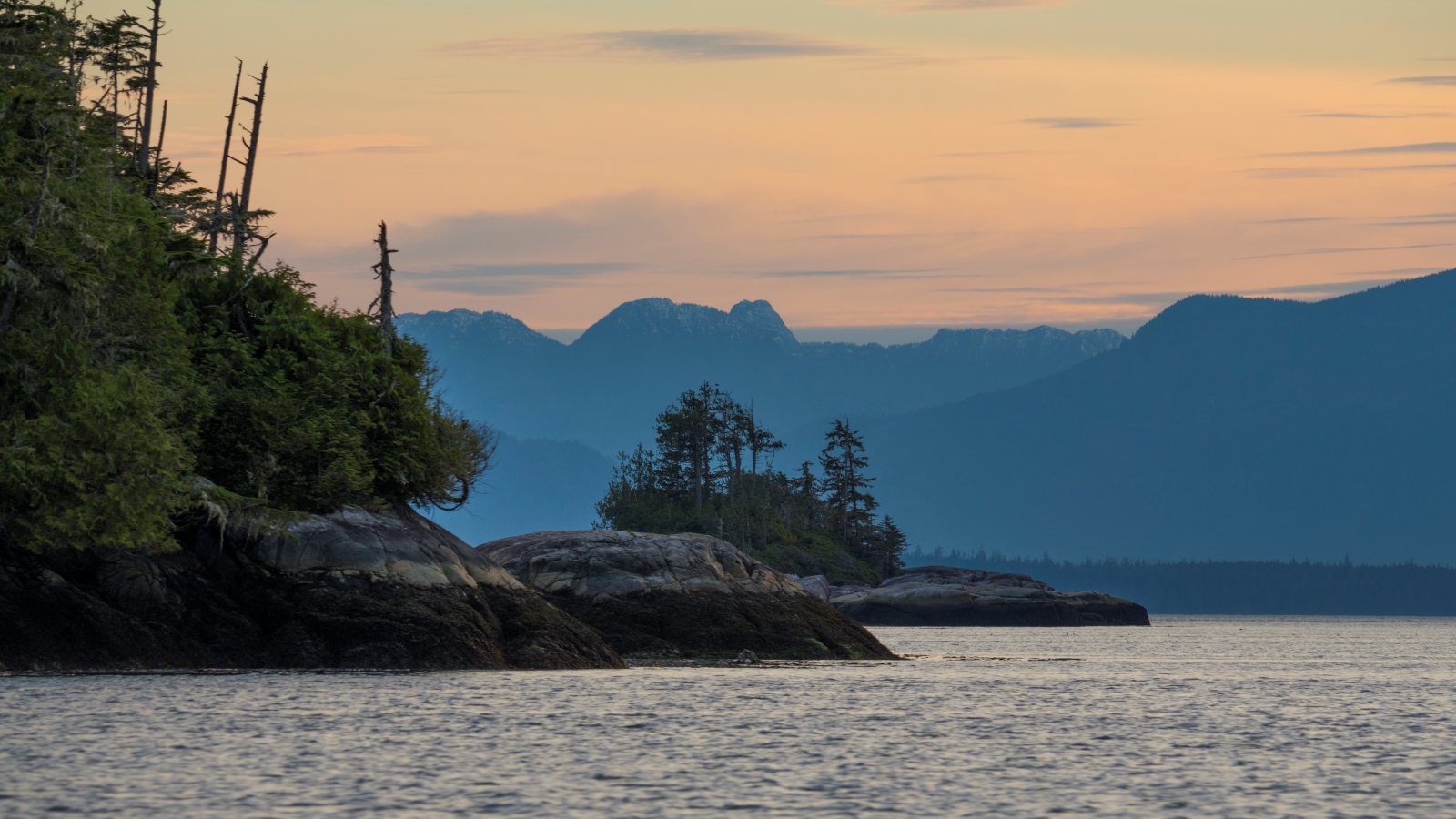
Vancouver Island’s Inside Passage
View ItinerarySpend a week cruising up Vancouver Island’s diverse coast with a world-class crew.
-
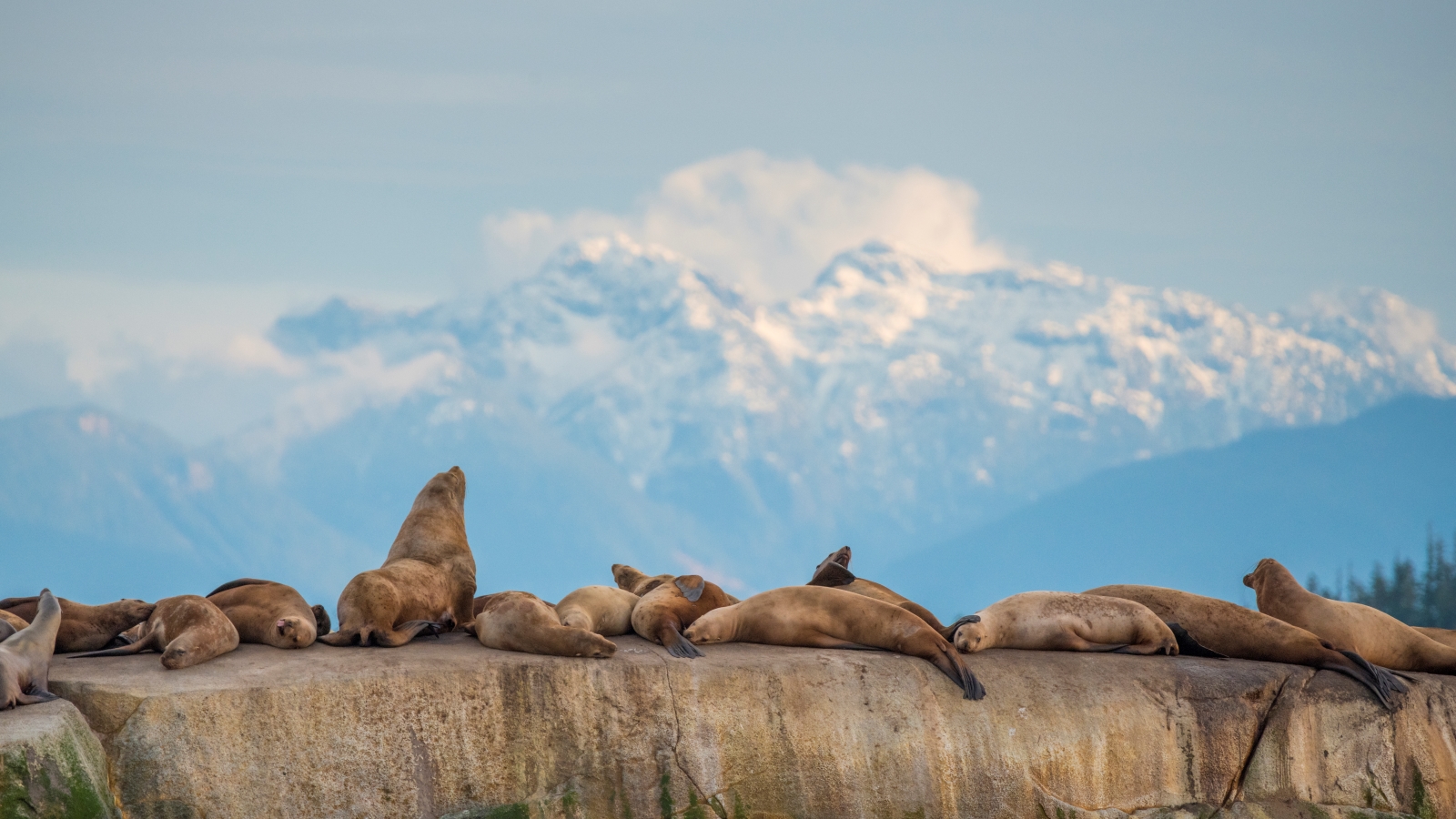
Desolation Sound
View ItineraryExplore the stunning waterways, fjords and islands of Desolation Sound, one of the world’s most popular cruising destinations.
Summer (July to August)
Long days, calm seas, and peak marine life
Summer is when everything comes to a head. The weather is warm (by coastal standards), and the waters are usually calm—ideal conditions for exploring by boat, kayak, or trail. You’ll get long daylight hours that allow for full days out, plus comfortable evenings around the fire or on deck.
This is prime time for wildlife watching. Humpback whales are actively feeding, orcas are often seen in northern Johnstone Strait and Blackfish Sound, and sea otters raft up in protected bays. On land, black bears are still around and a popular day trip activity up-island.
Summer’s also a good time for cultural experiences—many coastal Indigenous communities open cultural centres or host events where visitors can learn more about the coast’s deep-rooted history.
Photo: Jeff Reynolds
A traditional salmon bake with the Kyuquot people on Vancouver Island’s northwest coast—where fire, story, and sustenance come together.
That said, it’s the busiest time of year. Book ahead, especially if you’re looking at small group tours or accommodation in popular areas like Tofino or the Gulf Islands.
-
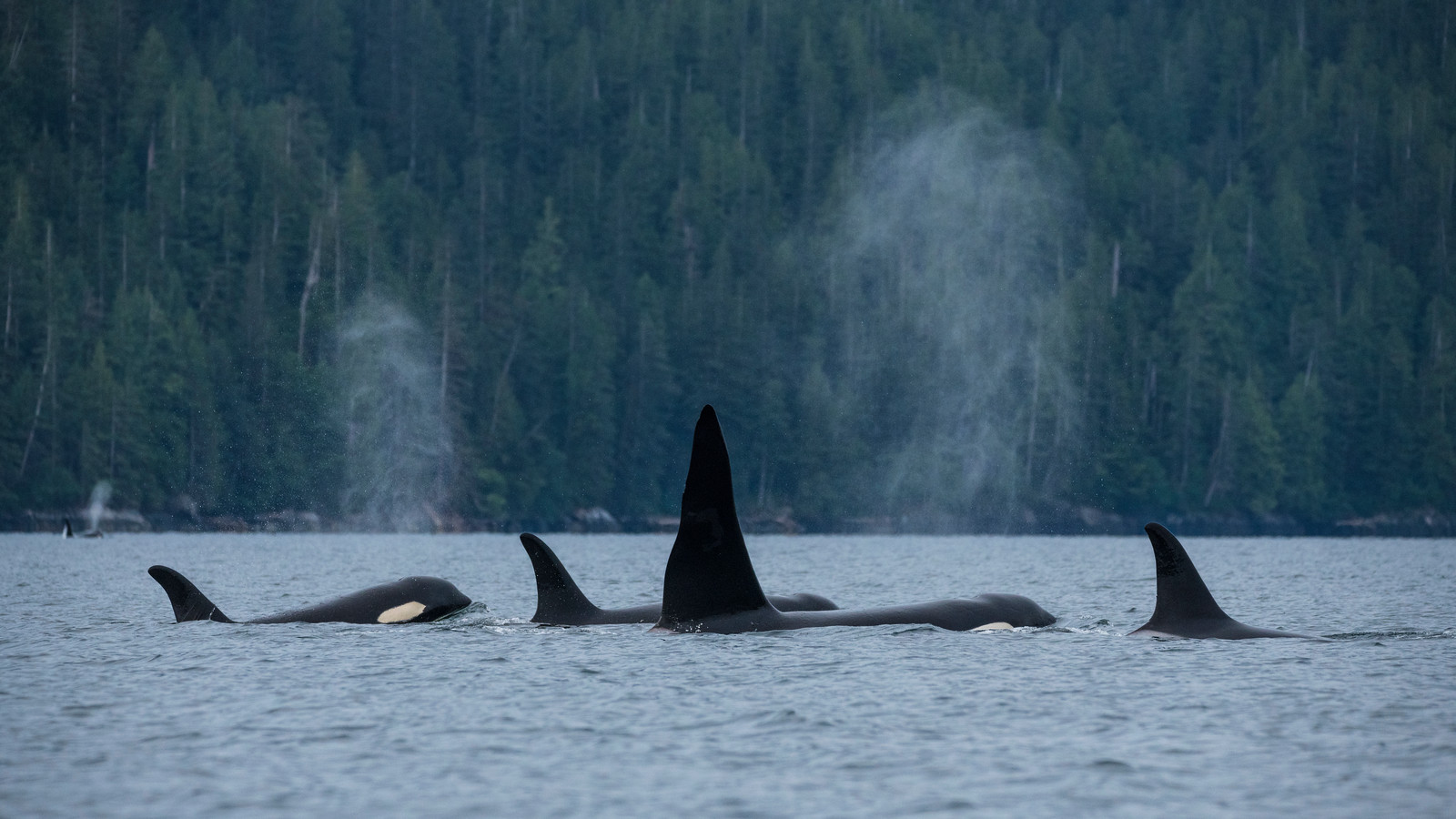
Whales and Totems
View ItineraryExplore intricate passageways between idyllic islands in the Broughton Archipelago, one of the best places on earth to see whales.
-
Vancouver Island’s Wild Side
View ItineraryCruise Vancouver Island’s rugged Northwest, where time is measured by the rise and fall of the tide.
-

Vancouver Island’s Inside Passage
View ItinerarySpend a week cruising up Vancouver Island’s diverse coast with a world-class crew.
Fall (September to early October)
Salmon runs, bear viewing, and dramatic coastal weather
If you’re interested in wildlife, fall is hard to beat. The salmon runs are in full swing—millions of fish returning to coastal rivers—and with them come black bears, grizzlies (on the mainland side), wolves, and birds of prey. It’s one of the most dramatic natural events on the coast.
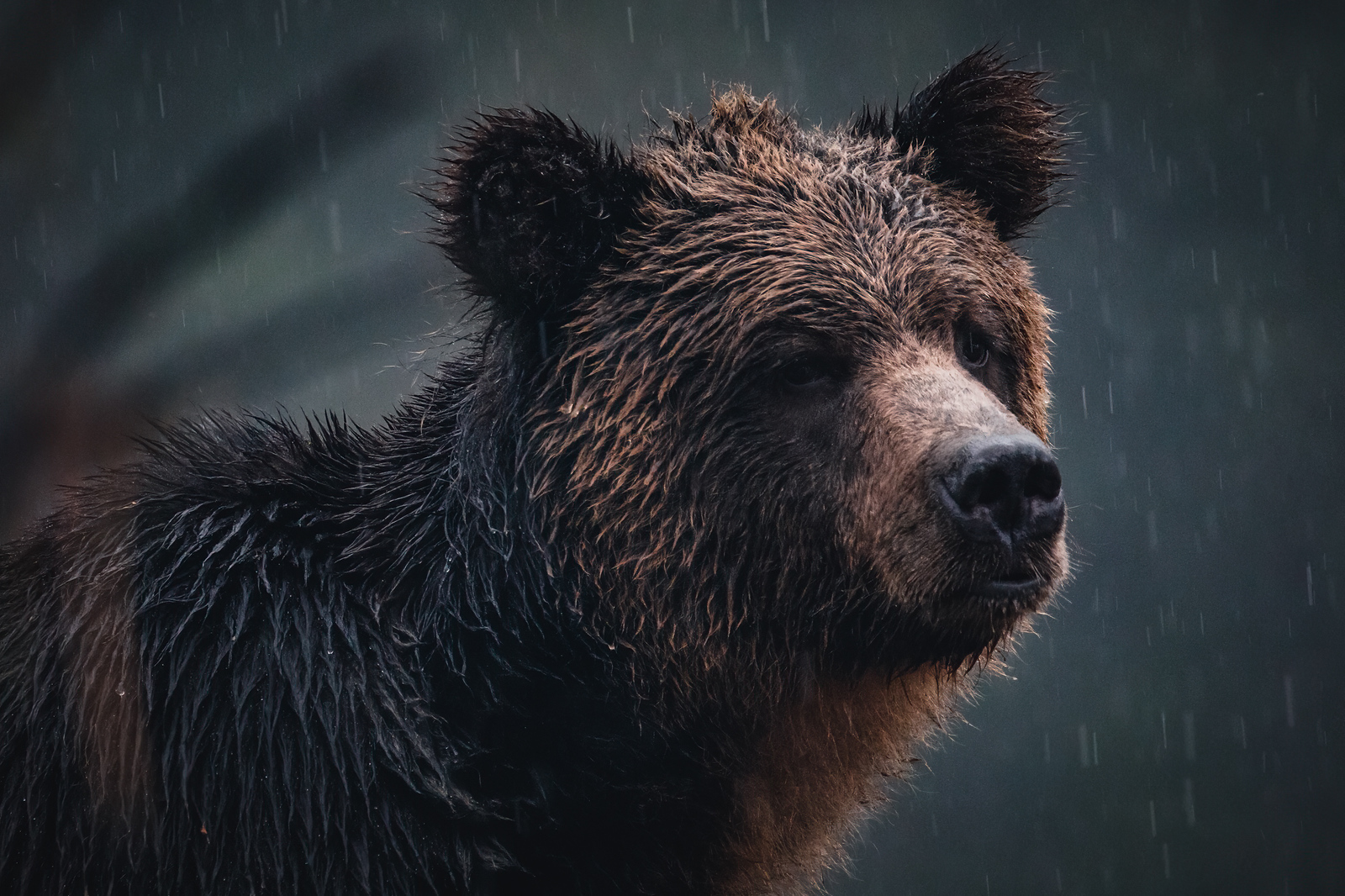
Photo: Simon Ager
The island’s geography and available food sources favor black bears, while grizzlies require the larger, more rugged mainland habitats for foraging and territory. Grizzly bear tours departing the Island will take you to places like Toba Inlet, where bears can be witnessed fishing for salmon.
You’ll still see humpbacks feeding offshore, and the weather often holds through September—calm seas, mild temperatures, and fewer people around. It’s a great time to be on the water, especially for photography and more intimate wildlife encounters.
The rainforest begins to shift, too. The light gets softer, the air heavier with mist. For those who don’t mind the odd rain squall and want a more reflective, less hurried visit, fall on the coast is a peak season.
-
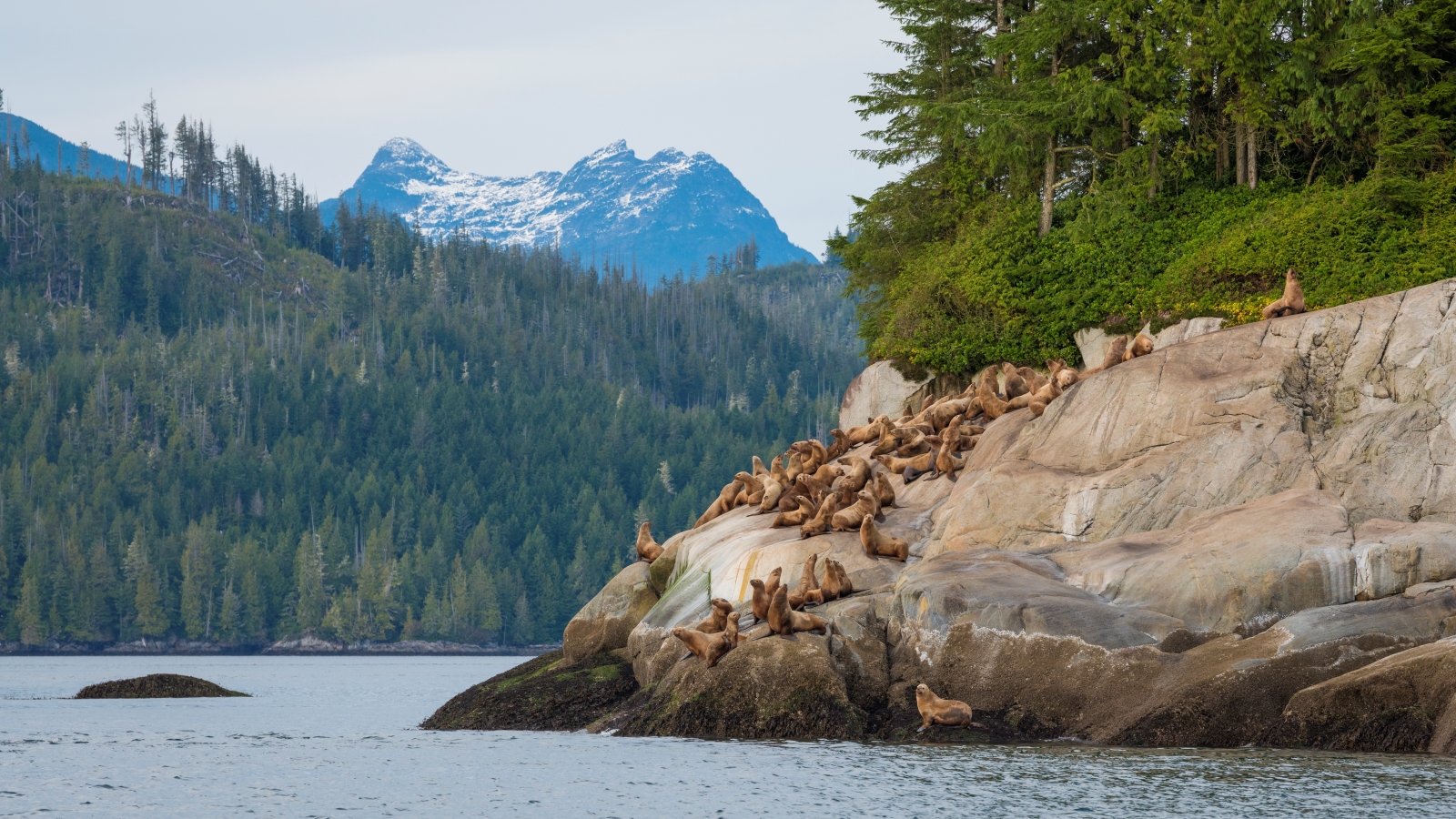
Desolation Sound and Fjords of BC
View ItineraryThis journey among the islands and fjords of the storied British Columbia coast includes Desolation Sound and the Broughton Archipelago, as well as neighbouring inlets.
-

Desolation Sound
View ItineraryExplore the stunning waterways, fjords and islands of Desolation Sound, one of the world’s most popular cruising destinations.
Vancouver Island Seasons at a Glance
| Season | Weather | Wildlife Highlights | Best For | Visitor Traffic | Local Insight |
| Spring (Mar–Jun) | 8–18°C (46–64°F); mix of sun and showers | Black bears, whales migrate, sea lions active, seabird nesting begins | Waterfalls, wildflowers, quiet trails, early wildlife viewing | Low to moderate | Forests glow vibrant green and trails are quiet. Dress in layers—sun and rain often trade places in the same day. |
| Summer (Jul–Aug) | 15–25°C (59–77°F); driest time of year | Humpbacks and orcas most active, sea otters visible, marine birdlife thriving | Boating, kayaking, cultural events, whale watching | Peak season | Warm, calm seas make remote areas most accessible. Book ahead. Quiet still exists—but it’s found by boat. |
| Fall (Sep–early Oct) | 10–18°C (50–64°F); increasing rain later in season | Salmon runs attract black bears and grizzlies; humpbacks still feeding | Bear viewing, photography, rainforest hikes | Moderate (tapers by late Sept) | Salmon runs are intense and powerful to witness. Desolation Sound and mainland inlets offer world-class grizzly viewing. Misty mornings are common and magical. |
Discover Your Season
You don’t need perfect weather to have a perfect trip here. Vancouver Island is defined by change: in tides, in seasons, in light. Come in spring if you want to catch the coast waking up. Come in summer if you’re chasing whales and long days. Come in fall if you’re after wildlife action, storm watching, and fewer visitors.
If you’re looking to get off the beaten path—into places you won’t find in guidebooks or from the highway—consider a small ship expedition. They’ll get you into the quiet inlets, the old village sites, and the places where the bears fish at dusk and whales pass by at breakfast.
Learn More Ask us a Question